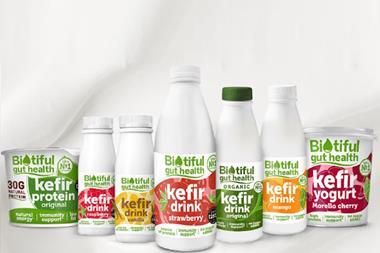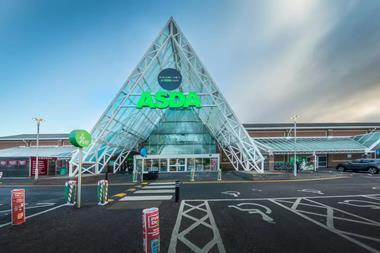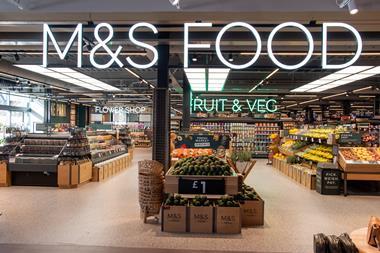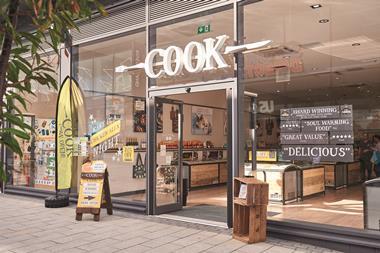Is Morrisons about to jettison one of grocery’s most effective marketing tools? Robert McLuhan reports
Four years ago Safeway raised eyebrows when it dropped its loyalty card and national advertising in favour of door-to-door marketing. Since then, communities near its stores have received a weekly leaflet promoting the latest price deals.
The door-to-door approach introduced by chief executive Carlos Criado-Perez proved a success, confounding the legion of sceptics. But Safeway’s new owner Morrisons plans to scale it back, saying it does not fit with its own marketing strategy. So does this mean that leafleting could fall out of favour?
Distributors have enjoyed a big surge in growth over the past five years. Mark Young, managing director of The Leaflet Company, says: “All the big grocers use the medium as a core part of their marketing mix, and there is no indication whatever that they will let up.”
The Direct Marketing Association (DMA) estimates companies spent £677m on door-to-door in 2002, a 6% slice of all below-the-line communications.
According to Thomson Intermedia, supermarkets were among the top four users last year, Safeway spending nearly £17m and Somerfield close behind with £16m. Tesco, Asda, Morrisons and the Co-operative Group also use leaflets, as do Budgens and other smaller retailers.
Although Safeway was the most reliant on leafleting, its demise does not mean that the medium is on its way out, suggest marketing experts. If anything it could trigger a spurt of growth as rivals move in to pick up the slack. But why are leaflets so popular?
One reason is that they have a shorter lead time than print and TV, which means offers and promotions are less beholden to deadlines. They can also be tailored to potential customers within local postcode catchment areas. Most are delivered with free newspapers, which is much cheaper than post. Another advantage is that the retailer can often share the cost with manufacturers whose brands are being promoted. Perhaps most important of all, the effect on sales is easy to quantify - for instance by comparing stores where leafleting has taken place with a control group where it has not.
“In terms of return on investment the medium is very beneficial, or we wouldn’t be doing the volume we are,” says Nicholas Hall, marketing controller at Somerfield, which distributes 230 million leaflets a year. They go out every week advertising top deals on a national and a local basis.
The company has put them through many formats, making changes to the size, page count, tone and message in response to customer feedback. Recently it reduced the size from A3 to A4, making it easier for shoppers to take them with them or give to friends.
Sainsbury adopted leaflets only three years ago, but has quickly scaled up to similar quantities, now delivering 250 million a year. Most are on a fortnightly cycle to promote offers, with a basic version distributed to around 9.5 million people. According to senior brand manager Gabrielle Appleton, door-drops are a good way to fight in areas where consumers have a choice of supermarkets.
The multiples also use door-drops to compare prices favourably with those of nearby rivals. That can trip them up, however. Safeway was rapped by the Advertising Standards Authority three years ago for giving misleading price comparisons with Morrisons.
Leaflets are popular with customers, despite ritual complaints in the press about junk mail. “It’s a myth that people don’t read items that come through their letterbox,” says Tim Rix, new business development director at Circular Distributors. When its parent company TPG Post surveyed 7,000 recipients recently, 84% said they at least gave a leaflet a glance and only 16% binned it unread. Nearly half said they were positively helpful, some taking the leaflets on their shop.
And recent focus group research by the DMA produced similar findings. For example one mother with young twins said she had little time to browse, so used leaflets to locate cheap deals quickly.
Confirmation that the leaflet is a long way from its sell-by date comes from Asda which appears to be taking it on to the next evolutionary stage. Asda first switched to leaflets to avoid the crush of supermarket ads in the press but now that the doormat has become just as crowded it has decided to change its approach again.
Instead of delivering a regular leaflet based on price deals, this year Asda will produce one every two months or so, to promote its one-stop shop offer. It is also providing more information, with the page count a relatively bulky 32 pages, or 48 for larger stores. “Safeway’s leaflet was about the offer of the week, whereas ours is more reflective of a seasonal change and particular customer needs,” says marketing manager David Martin. The next, due in June, will have a summer theme.
Leaflets are also ideal for retailers with a regional base that do not advertise nationally. One is United Co-op in the north-west, which until recently used them for only a small number of its stores, but extended this in February to cover most of its 400-plus outlets every three weeks. “We can see a marked increase in our customer count,” says Susan Beetlestone, general manager, marketing.
If anything, independent grocers are even more dependent on leaflets than the big multiples, according to John Sharpe, managing director central distribution services at Nisa-Today’s. “Our member stores do not trade under the same fascia, which makes promotional activity such as television advertising very difficult,” he explains. Every third week it distributes 4.8 million leaflets, targeted by postcode to members’ stores. All are tailored to their specific location, which Sharpe says is essential.
Compared to magazines and radio, door-to-door is not the most glamorous medium, but it works. And if it works it counts and will continue to count in the future.
Four years ago Safeway raised eyebrows when it dropped its loyalty card and national advertising in favour of door-to-door marketing. Since then, communities near its stores have received a weekly leaflet promoting the latest price deals.
The door-to-door approach introduced by chief executive Carlos Criado-Perez proved a success, confounding the legion of sceptics. But Safeway’s new owner Morrisons plans to scale it back, saying it does not fit with its own marketing strategy. So does this mean that leafleting could fall out of favour?
Distributors have enjoyed a big surge in growth over the past five years. Mark Young, managing director of The Leaflet Company, says: “All the big grocers use the medium as a core part of their marketing mix, and there is no indication whatever that they will let up.”
The Direct Marketing Association (DMA) estimates companies spent £677m on door-to-door in 2002, a 6% slice of all below-the-line communications.
According to Thomson Intermedia, supermarkets were among the top four users last year, Safeway spending nearly £17m and Somerfield close behind with £16m. Tesco, Asda, Morrisons and the Co-operative Group also use leaflets, as do Budgens and other smaller retailers.
Although Safeway was the most reliant on leafleting, its demise does not mean that the medium is on its way out, suggest marketing experts. If anything it could trigger a spurt of growth as rivals move in to pick up the slack. But why are leaflets so popular?
One reason is that they have a shorter lead time than print and TV, which means offers and promotions are less beholden to deadlines. They can also be tailored to potential customers within local postcode catchment areas. Most are delivered with free newspapers, which is much cheaper than post. Another advantage is that the retailer can often share the cost with manufacturers whose brands are being promoted. Perhaps most important of all, the effect on sales is easy to quantify - for instance by comparing stores where leafleting has taken place with a control group where it has not.
“In terms of return on investment the medium is very beneficial, or we wouldn’t be doing the volume we are,” says Nicholas Hall, marketing controller at Somerfield, which distributes 230 million leaflets a year. They go out every week advertising top deals on a national and a local basis.
The company has put them through many formats, making changes to the size, page count, tone and message in response to customer feedback. Recently it reduced the size from A3 to A4, making it easier for shoppers to take them with them or give to friends.
Sainsbury adopted leaflets only three years ago, but has quickly scaled up to similar quantities, now delivering 250 million a year. Most are on a fortnightly cycle to promote offers, with a basic version distributed to around 9.5 million people. According to senior brand manager Gabrielle Appleton, door-drops are a good way to fight in areas where consumers have a choice of supermarkets.
The multiples also use door-drops to compare prices favourably with those of nearby rivals. That can trip them up, however. Safeway was rapped by the Advertising Standards Authority three years ago for giving misleading price comparisons with Morrisons.
Leaflets are popular with customers, despite ritual complaints in the press about junk mail. “It’s a myth that people don’t read items that come through their letterbox,” says Tim Rix, new business development director at Circular Distributors. When its parent company TPG Post surveyed 7,000 recipients recently, 84% said they at least gave a leaflet a glance and only 16% binned it unread. Nearly half said they were positively helpful, some taking the leaflets on their shop.
And recent focus group research by the DMA produced similar findings. For example one mother with young twins said she had little time to browse, so used leaflets to locate cheap deals quickly.
Confirmation that the leaflet is a long way from its sell-by date comes from Asda which appears to be taking it on to the next evolutionary stage. Asda first switched to leaflets to avoid the crush of supermarket ads in the press but now that the doormat has become just as crowded it has decided to change its approach again.
Instead of delivering a regular leaflet based on price deals, this year Asda will produce one every two months or so, to promote its one-stop shop offer. It is also providing more information, with the page count a relatively bulky 32 pages, or 48 for larger stores. “Safeway’s leaflet was about the offer of the week, whereas ours is more reflective of a seasonal change and particular customer needs,” says marketing manager David Martin. The next, due in June, will have a summer theme.
Leaflets are also ideal for retailers with a regional base that do not advertise nationally. One is United Co-op in the north-west, which until recently used them for only a small number of its stores, but extended this in February to cover most of its 400-plus outlets every three weeks. “We can see a marked increase in our customer count,” says Susan Beetlestone, general manager, marketing.
If anything, independent grocers are even more dependent on leaflets than the big multiples, according to John Sharpe, managing director central distribution services at Nisa-Today’s. “Our member stores do not trade under the same fascia, which makes promotional activity such as television advertising very difficult,” he explains. Every third week it distributes 4.8 million leaflets, targeted by postcode to members’ stores. All are tailored to their specific location, which Sharpe says is essential.
Compared to magazines and radio, door-to-door is not the most glamorous medium, but it works. And if it works it counts and will continue to count in the future.



















No comments yet